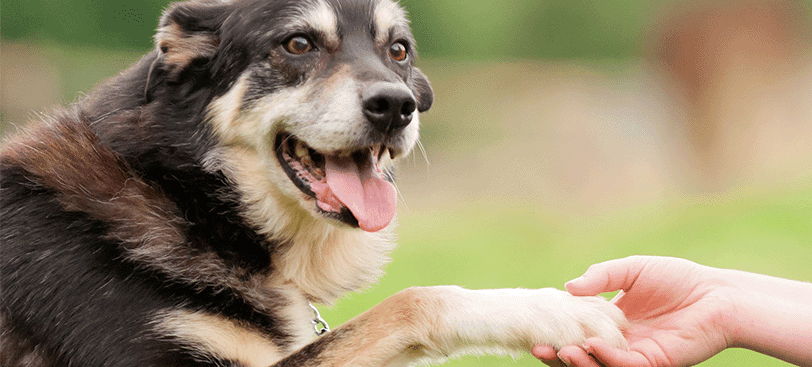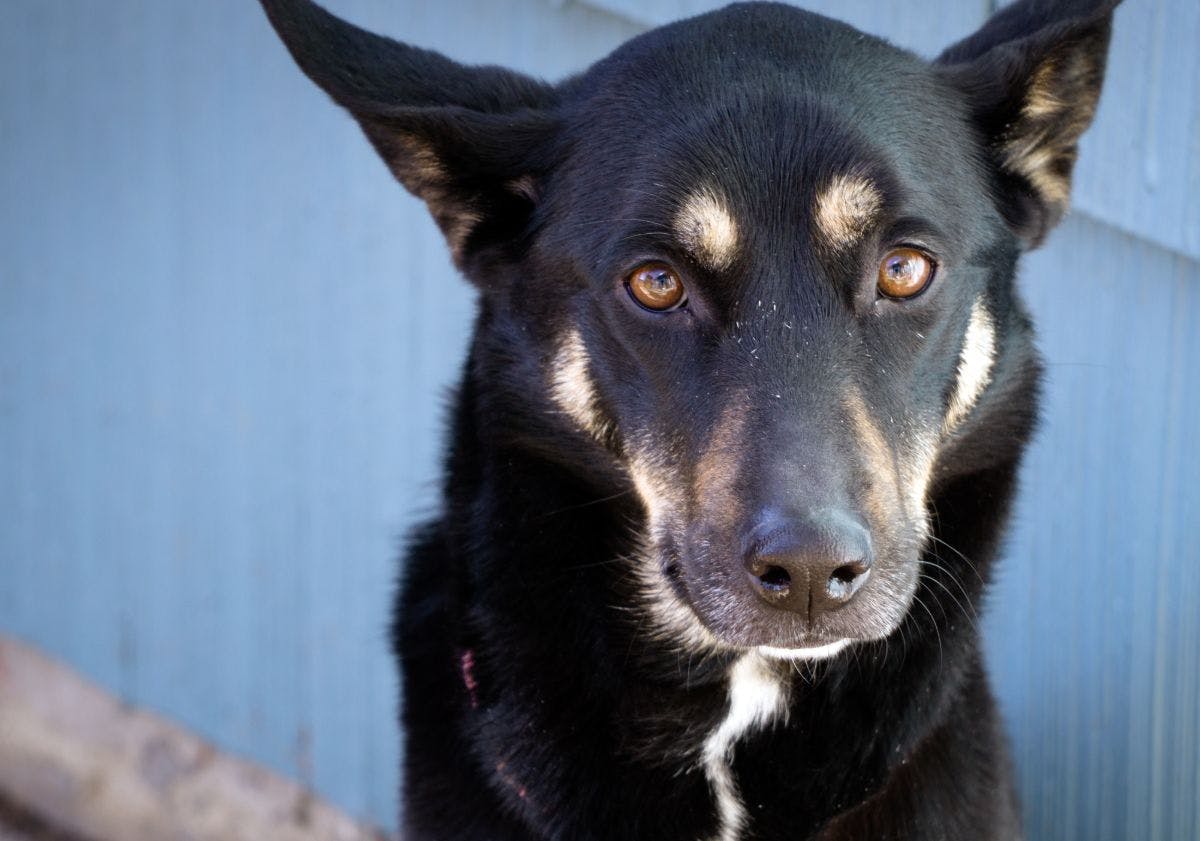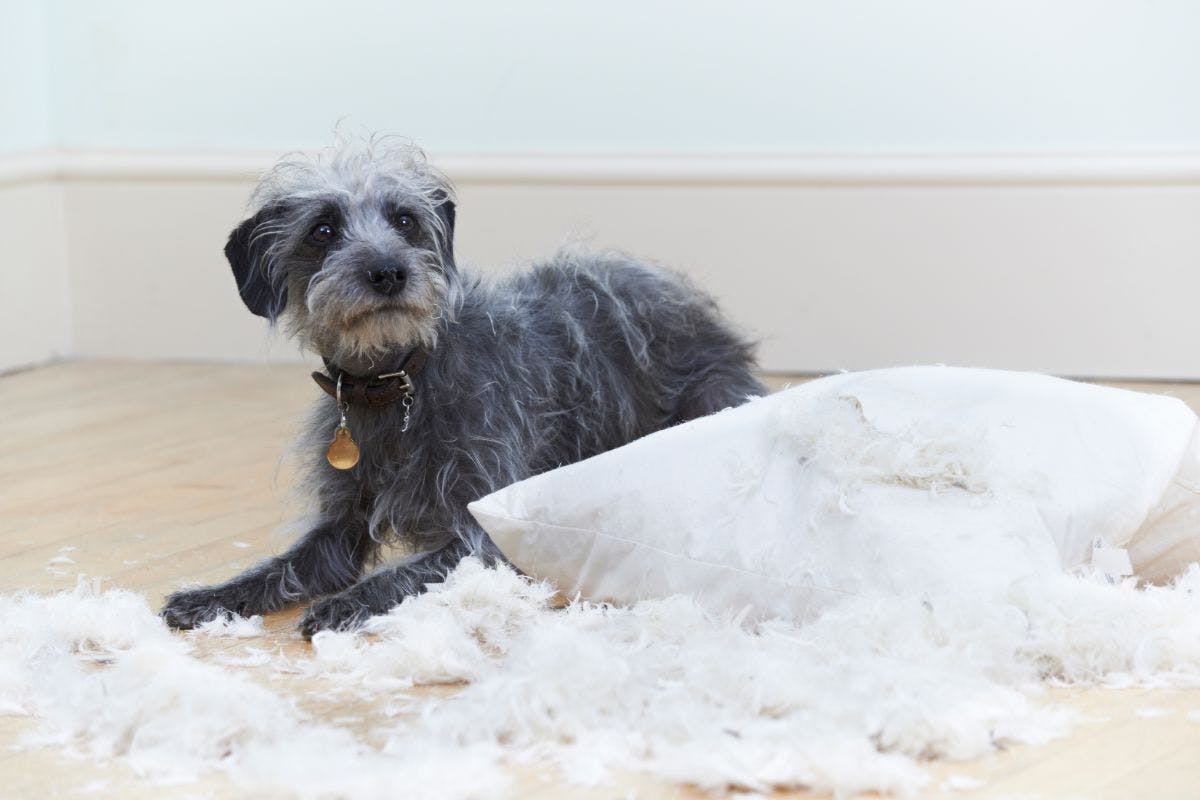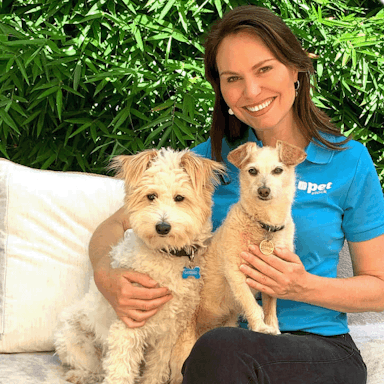
If you’re thinking about adopting a rescue dog or have just done so, we’ve got some essential training tips ready and waiting. With the help of certified dog trainer and behaviourist, Lara Shannon, we’ve popped together some of the key questions and rescue dog training tips to guide you through your journey.
When you adopt a dog, you usually get a good idea of their personality, training and behavioural background from your rescue organisation, but in some cases, you may not (background can’t always be foolproof or known). It’s important to be aware and prepared to take a little extra care when integrating your new best friend into your life, including their new training regime.
Here are some of the hot topics and rescue dog training tips covered by Lara Shannon.
Firstly, we want to cover one of the most common questions about training a rescue dog:
How Long Does it Take to Train a Rescue Dog?
LS: Every dog is an individual, and every situation is different, so it’s really not possible to put a time on this. It will usually take longer than a puppy or an adult dog who hasn’t had many negative life experiences. Potentially, you’re not only dealing with an anxious dog, or a dog that hasn’t been socialised well, or at all, they may also have some deeply ingrained habits.
Obedience Training for Rescue Dogs
As Lara has mentioned above, every dog is unique, and every rescue dog has a unique life experience. If your rescue dog hasn’t been exposed to a great deal of training in their early years, obedience may need to be a focus. There’s no such thing as ‘rescue dog obedience training’, but there are ways to approach obedience training for dogs who already have ingrained habits or learnings.
How should you approach obedience training for rescue dogs?
LS: Training a rescue dog should follow the same principals as training any other dog, but it can be a little more challenging, requiring extra patience and understanding. You may find yourself working with a dog with existing physical or emotional issues, bad habits, existing training learnings, or lack of training at all.
The key is to find out what motivates them the most. Is it a squeaky toy? Ball play? Food? And if it is food, what kind of food do they value above all else? Mixing it up may be the key to keep them interested, or to overcome any fears.
It’s important to note that if a dog is anxious, they will not be open to learning, so you need to do it in a quiet place, with positive encouragement and reward-based training only, with no distractions.
Lastly, remember to make this experience fun for your new dog too! It will make it a whole lot easier.
Are there any obedience commands you should try to master first?
To find out how much your dog already knows about a command, try using either a verbal command or a hand signal. Rule of thumb is to say the command with the appropriate signal, and if the dog doesn’t respond, repeat after 10 seconds and try again.
LS: While there are LOTS of commands a dog can learn, here are some of the key commands for obedience training for rescue dogs
Come - In my view this is THE most important command every dog should reliably be able to perform. This needs to be practised at home under low distraction, then gradually moving up to greater distractions and distance.
Stop - This is another one of my ‘must knows’. Teaching your dog to stop on command may mean the difference between life and death.
** Sit** - This helps with impulse control and can be used as an alternative command to prevent unwanted behaviours such as jumping on people.
Stay - This can help keep them safe from harm. Always give them a release word i.e. ‘free’ so they know when they can move again.
Drop - This command is useful in many settings, from the vet to a café, where you need them to be more relaxed or lower to the ground than a sit.
Yuck or Leave it - For dogs who love to pick up everything in their mouth, this will help deter this behaviour.
How to house train a rescue dog
LS: You must go right back to basics as if you were training a puppy. However, you may also be looking to overcome already established and ingrained bad habits. Be prepared and patient, as it may take a lot longer than you expect.
It’s also important that you are clear and consistent with what you want of them in their new environment – rewarding them every time they display the desired behaviour or do the right thing. Plus, be extra vigilant you are not unknowingly rewarding them for the unwanted behaviour.
Also, keep in mind their past experiences may mean certain places, situations and textures can be scary to them or even unknown to them. So, try different areas, for example, some dogs may have never felt grass under their feet before (it happens, it’s real) so you’ll need to need to work around this and find alternatives.
It can also be common for a rescue dog without prior training to be confused around boundaries. If, say, the house is tiled inside, and there is also concrete or tiles outside, it may become tricky. So, consider a puppy pad or grass patch in a certain area to encourage them to go there and make distinct differences between various areas of the house or yard.
Behavioural Training for Rescue Dogs

In some cases, a rescue dog can have existing behavioural quirks or challenges – but this doesn’t mean they’re unable to overcome these hurdles or be provided with the right environment to thrive. Some people want to know how to train an ‘aggressive’ rescue dog, while others want to know how to house train a rescue dog – especially when they’re a little older.
Here are some of Lara Shannon’s best rescue dog training tips related to behaviour.
What is the best way to train an aggressive rescue dog?
LS: Most people have the wrong perception of what aggression in dogs is really communicating, or why it’s happening. In most cases, for rescue dogs, or any dog, it is usually fear-based aggression, or may also just be excitement or frustration.
A familiar pattern I experience, is being told by owners the aggression is “sudden” or the dog “was fine before”. In most cases, this comes down to perception and awareness, rather than a ‘sudden’ change of behaviour.
The signs of stress and fear can be very subtle, so are often ignored, and often leads to being pushed into situations that cause anxiety. If they do feel anxious or threatened, this can build up to a point where the dog can no longer contain their response and lashes out, trying to communicate their unease and attempting to remove the threat.
Some of the reasons for reactivity or aggression:
- A painful medical condition: if you notice a sudden behaviour change in your dog, it is important as a first step, to get a medical check to rule out any sickness or injury that may be causing them to act out.
- Fear-based aggression: There are some things we can do ourselves to help control and improve the situation, but again, I do always recommend you seek help from an experienced trainer to make sure you get it right as it is a problem that gets worse, not better, if not addressed as soon as you notice it.
- Anxiety: Some rescue dogs can be in a constant state of alarm or vigilance due to an anxiety issue. You must not punish an anxious dog for their behaviour, as it can make the problem even worse.
The process of treating reactivity:
It’s important to look for the signs your dog is uncomfortable or nervous. This can include licking of lips or flicking of the tongue, ears folding back, tail tucking under their body or the top lip beginning to curl back to show teeth when encountering a ‘trigger’.
We want to decrease the dog’s stress in those ‘trigger’ situations by making it a pleasurable experience through positive association and reinforcement of desired behaviour (no reaction).
In some instances, we must use distance to give your dog what it wants, by quickly and calmly crossing the road, thereby getting them away from the trigger before they react. You then reward them for no reaction or really ‘upping’ the praise if they look at the trigger, don’t react, and keep walking with you.
If you can’t move them away, then calmly moving them out of the direct path or as far away as you can, and then try a counter command such as ‘sit’ or ‘look at me’ to take their attention off the trigger and reward them for the desired response may also help distract them from the ‘threat’.
In the end, your dog should be more distracted by your command, treat or presence, to even care about the trigger. It takes lots of practice and persistence!
How do you train a rescue dog with separation anxiety

LS: When it comes to the question around ‘rescue dog separation anxiety training’, it’s method of response for any dog who suffers from this type of anxiety. There are many varying causes of anxiety in dogs, which need to be identified and assessed before choosing a treatment approach.
If the separation anxiety is severe due to negative life experiences, I recommend seeing a vet behaviourist to discuss a holistic training plan. This may include some form of medication, but it does need to be the right one, so make sure you understand the different options available and how your dog might react.
Even if it’s recommended your dog takes medication, or the separation anxiety is mild, it’s still important to do some independence training and provide enough mental and physical stimulation. You also need to ensure you aren’t making it worse by reinforcing the anxiety.
Independence training basics
- Ensure your dog has a ‘safe’ space or place, where they feel safe and secure, where only good things happen. This will help your dog find comfort in a ‘place’ when you’re not around. Crate training a rescue dog is also a great option for creating a safe space for your dog, so make sure to consider this an option early on.
- Implement independence intervals to train your dog at a reasonable pace. Leave your dog alone (even if you’re at home) 3-5 times a day – ushering them into their safe space and providing treats, toys or puzzles to keep them occupied.
- Stick to general daily routines, as dogs thrive familiarity – including their daily walks (which will also help tire them out).
- Change up your leaving or departure routine. Dogs are always watching our every move and can get worked up by your departure signs, i.e., keys rattling, shoes being put on.
- Don’t reinforce their behaviour by providing attention to them when they’re jumping up, barking or whining at you. Wait until they calm down and settle before giving them your love.
Training a nervous rescue dog, or one with anxiety, will always take some time and patience, but the reward is worth it. Your new best friend will love the bond, attention, and reliability of their new companion.
What’s your final piece of training advice for new rescue dog parents?
LS: When it comes to rescue dog training tips, my final snippet of advice would be to make sure any training is done so with the right care and experience, to help ensure any existing problems are not made worse. So, do seek out the services of a qualified and experienced dog trainer or vet behaviourist to assist. Plus, here are some quick points below.
- Be clear and consistent with your responses and techniques.
- Be a calm and fair leader so they know you have the situation under control. You don’t want them to feel they have to take care of it or be nervous about it.
- Reward all desired behaviour, as punishment creates more anxiety and can make problems worse.
- Understand that the process is going to be slow, so be patient, use repetition and create positive associations with new experiences and triggers.

Lara
Shannon
Lara Shannon
Lara Shannon is a certified dog trainer and behaviourist, and Petstock Ambassador. She's also the host of Channel 10's Pooches at Play and author of dog handbook ‘Eat Play Love (Your Dog)'. Her number one passion is to educate and empower people to help improve the lives of companion animals.